“Thousands joined a peaceful protest on Saturday in the Croatian town of Vukovar to express their anger at Croatian institutions for their “silence” over war crimes committed during the 1990s war” (Balkan Transitional Justice, 2018-10-13).
The following essay is my constructive contribution to the above article.
Preface
On the occasion of more than two decades of the end of the civil war on the territory of ex-Yugoslavia (1991−1995), it is necessary to reassess the real causes and cardinal perpetuators of Yugoslavia’s internal and external bloody destruction. In the Western scientific literature of the “liberal democracy” scholars (like by the journalists and policymakers as well) exists for the last 25 years a standard cliché on the issue of Yugoslavia’s ending as the only cause of its destruction are seen to be the Serbs as a nation[1] and only Yugoslavia’s destroyer is considered to be Slobodan Miloshevic – a “Balkan butcher”.[2] However, the same scholars (and journalists and policymakers) did not and are not pay any attention to other either internal or external destroyers of the country, especially not to the case of Croatia and her authoritarian and neo-Nazi (Ustashi) regime of Dr. Franjo Tudjman’s Croat Democratic Union (the HDZ) who, in fact are the alpha and omega of the killing of Yugoslavia in the 1990s. As a matter of illustration, for example, Franjo Tudjman is not included into the anthology of the top-20th century South-East European strongmen, authoritarian rulers and dictators edited by Bernd J. Fischer but Slobodan Miloshevic is.[3] Therefore, this research article is a contribution to the more accurate lightening of the reasons and the causers of Yugoslavia’s death in 1991−1995 dealing with the phenomena of the authoritarian and dictatorial neo-Nazi (Ustashi) regime in Croatia established by Franjo Tudjman in 1990.[4]
The internal and much more external destruction of the former Yugoslavia in the 1990s is celebrating in 2018 its 27th years of anniversary. The date of celebration is taken to be when Slovenia and Croatia formally announced its independence on June 25th, 1991. However, this historical and much more geopolitical event still needs a satisfactory research approach in regard to the true geopolitical reasons and political-military course of the destruction of this South Slavic and Balkan state. During the last quarter of a century, the (Western) global mainstream media unanimously accused Serbia and the Serbs for the national chauvinism as the main cause of the bloody wars on the territory of ex-Yugoslavia in the 1990s. However, the role and direct impact of the other Yugoslav republics and nations in the process of killing the common state was not taken (purposely) into the consideration; especially of the Croats and Croatia as the biggest nation and republic after the Serbs and Serbia.
An HDZ’s order in Croatia
The HDZ took power in Croatia after the spring parliamentary and presidential elections in 1990 according to the majoritarian electoral principle. Therefore, the party (established in 1989)[5] had an absolute majority in Croatia’s Parliament (Sabor) with Franjo Tudjman as both Croatia’s President and the party leader – a fact which, according to the German political analyst, H. Hoppe, allows the HDZ to establish a full scale of the party’s dictatorship in Croatia for a decade (till 2000).[6] A direct consequence of such electoral results in Croatia, inspired by the electoral results in Bosnia-Herzegovina too, there was an election in Serbia of Slobodan Miloshevic and his Socialist Party of Serbia (the SPS) in December 1990 according to the same majoritarian electoral principle as in Croatia. In other words, an election of Miloshevic and his SPS in Serbia was, in fact, Serbia’s answer to the electoral results in Croatia and Bosnia-Herzegovina – two Yugoslav republics in which the ultraright political parties won power at the eve of the new civil war. It was clear for the majority of the Serbs in ex-Yugoslavia that a neo-Nazi Croat Ustashi regime was established in Croatia followed by a regime of the Islamic fundamentalist Party of Democratic Action (the SDA) of Alija Izetbegovic in Bosnia-Herzegovina. That became the main reason for Serbia’s electorate to vote for its own strongman and nationalist who can above all protect their brethren Serbs in other Yugoslav republics (Croatia and Bosnia-Herzegovina) from the new Croat-Muslim-led holocaust as a continuation of the WWII Magnum Crimen against the Serbs.[7] For Croatia’s Serbs (the “Survivors” of the WWII Ustashi-led holocaust), especially in the Krajina region with the town of Knin as its capital, Franjo Tudjman was nothing else than a new Ante Pavelic (the WWII Nazi Croat leader) and the HDZ as democratically redressed the WWII Nazi Croat Ustashi movement.[8]
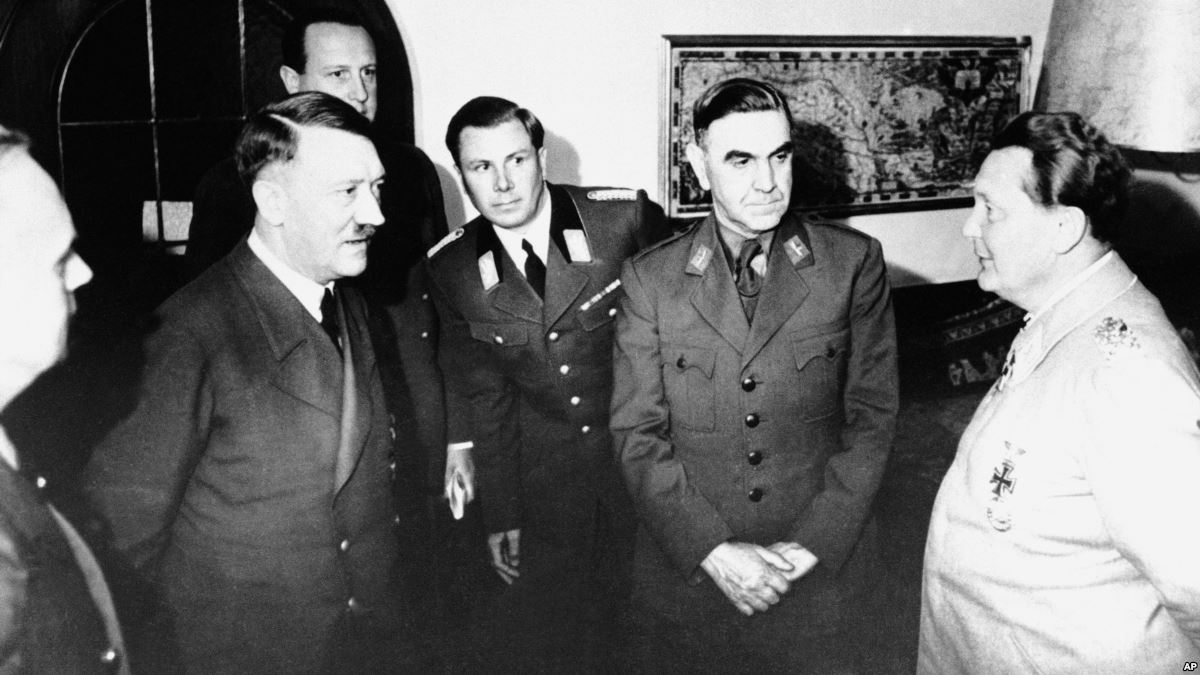
A new HDZ’s authorities by using a propaganda pattern of creation of a Greater Serbia by Miloshevic’s regime, succeeded very soon to introduce a state-building construction that was in absolute odds to the idea of (the Western) political liberal democracy and a society of multicultural and multiethnic coexistence. A state-building party’s policy was mainly based on traditional Croat clerical right-wing nationalism what can be probably seen as the best in the appropriation of the extreme Croat national movement’s insignia and rhetoric from the time of 1941−1945 Independent State of Croatia (the NDH). A German Nazi NSDAP salutation, for instance, was used even in the Parliament in Zagreb by the HDZ’s members during the official parliamentary sessions.[9]
In the HDZ’s Croatia a new political elite was lesser interested in introducing of the Western liberal model of political democracy based on the rights and role of the Parliament in the national political system and free media and speech than in continuation of the WWII policy of the final solution of the “Serb Question” in a Greater post-WWII Croatia with attempts to annex a greater part of Bosnia-Herzegovina as this Yugoslav republic was an integral part of Pavelic’s NDH. At such political atmosphere that was based on traditional Croat Roman Catholic clericalism, the ultraright and even Nazi ideologies found very proper ground in the post-Socialist Croatia – a country directly supported by the Vatican and the Western democracies but primarily by Germany. Among all ex-Socialism East European countries, Croatia was the best example of the transition from a state Socialism to quasi-democracy by brutal nationalism and ethnic exclusivism.
It is known that the creation of a new ideological foundation is essential in the process of making a new state. In the 1990s, a new political leadership of the HDZ in Croatia drawn an extreme nationalistic and ultraright political-national ideology, fundamentally based on Serbophobia, in order to get a massive public support for their political goals and projects. An ideological framework of anti-Serbism was the main ground on which the HDZ’s Government was building a new independent state of Croatia by creating a new army, security forces, institutional framework and normative order of a “democratic and pro-European Croatia”. It is of extreme importance to stress that an establishment of a new normative order was essential in the time of chaotic atmosphere during the process of final collapse of previous state-Socialism system with its own norms and values, Croatia’s declaration of state independence on June 25th, 1991[10] and the outbreak of the conflict against both the central authorities in Belgrade and Croatia’s Serb population who decisively opposed to live in any kind of a neo-Nazi independent Croatia taking primarily into account their extremely bloody experience from the time of the WWII NDH. Furthermore, an establishment of a new normative order was important to legitimize political actions of the new authorities and to mobilize the ethnic Croats for the state-building process and above all for the final solution of the “Serb Question” in Croatia and parts of Bosnia-Herzegovina. At such a way, a new Government succeeded to direct mass actions of the ethnic Croats in regime-approved ways: a war against the Yugoslav army and Croatia’s Serbs in the mid-1991 and finally the ethnic cleansing of a majority of Croatia’s Serbs in the mid-1995. The fact was that the ultraright nationalistic ideology provided the biggest part of the content of the new Croatia’s normative order and values, with profound ethnopolitical consequences.
It has to be explained why exactly ultranationalistic, rather than any form of a liberal democratic, ideas and ideology became predominated in the HDZ’s Croatia in 1991−1995. There are five main reasons for such development of Croatia’s politics and society at that period of time:
- The Government’s emphasizes on Croatia’s state-building and solving the “Serb Question” in Croatia over all other political concerns helped propel an ultranationalistic ideology, with its exclusive aim on creating a new independent state of a Greater Croatia without the ethnolinguistic Serbs who has to disappear from this state on that or another way.
- The ultraright and extremely nationalistic (even Nazi) ideology, based primarily on the 19th century self-proclaimed and self-interpreted Croatian “state rights”, had a well-articulated state-building and ethnic cleansing agenda and an acknowledged place in Croatian history.[11]
- As the old Socialism political establishment and normative order and values became after the spring elections in 1990 delegitimized while new ideologies and political-normative order and values are not firmly established, the traditional conservative-clerical ideology of the so-called Croatian “historical rights” provided the basic and functioning framework for public discourse and regime policy.
- A popular receptivity to such ultranationalistic ideology and propaganda was possible in the political atmosphere in which the Croats still claimed that the territory of the Socialist Republic of Croatia (which borders were fixed by the Yugoslav Communists led by half Slovene and half Croat, Josip Broz Tito) was legitimate and based on (self-understood) ethnic and historical rights of the Croats.
- The HDZ co-opted the message and organization of the extreme right with appropriation of basic symbolic and ideological elements of the WWII Croat ultranationalism in order to create a new legitimizing narrative of the state and national policy that became very quickly and effectively appreciated by the demos of ethnic Croat origin as the Croats were traditionally educated to such direction of viewpoint. Nevertheless, as a direct consequence, a development of a real political democracy and a civic society building process in Croatia became ruined and at least postponed.
The ideological components and organizational forms of the Croat ultraright nationalism
The Croat ultraright nationalism and nationalistic ideologies are mainly based on the 19th-century ideology of the Croat “state rights” favored and maintained by the pravashi (the rightists). They and their groups and political parties espouse the same ethnopolitical goals as the leader of the 19th-century extremist and a racist strand of the same Croat national movement and Croatian Party of Rights (the HSP, established 1861), Ante Starchevic. They appropriated two very essential elements of the HSP national ideology:
- A creation of a Greater Croatia with Bosnia-Herzegovina and some other South Slavic territories.
- An extermination of all Orthodox Serbs from a Greater Croatia or their Croatization.[12]
Ante Starchevic urged the creation of a Greater Croatia and not recognizing the existence of any other South Slavs except the Croats and Bulgarians.[13] His ideology and the HSP party’s program and narrative were markedly colored by anti-Serb tone. Consequently, both of them became the main ideological framework for the extermination of the Serbs on the territory of the NDH, 1941−1945 and for the ethnic cleansing of the Serbs by Tudjman’s regime in 1995 (the “Flash” and “Storm” military-police operations in May and August). In 1895 it was established even more radical and nationalistic the Pure Party of Rights (the ČSP) headed by Josip Frank (of the Jewish origin) whose members and ideological followers took active participation in the pogroms against the Serbs in Croatia and Bosnia-Herzegovina during the WWI.[14]
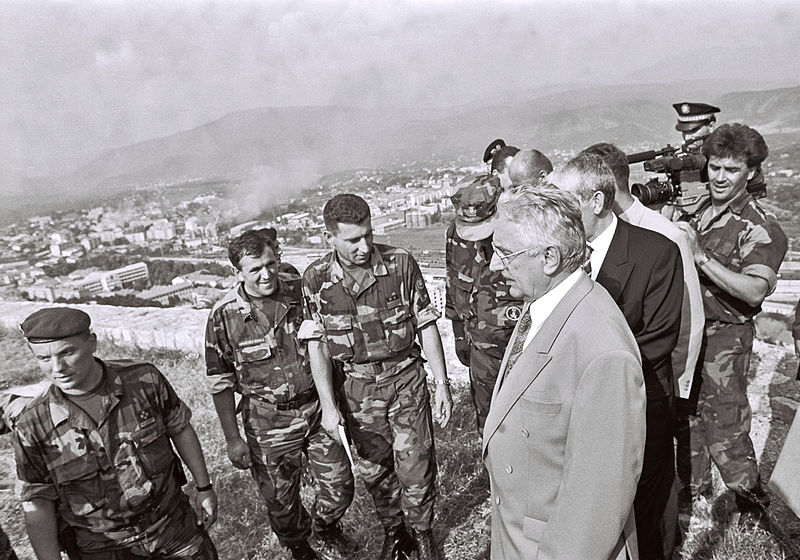
The post-Yugoslav HSP, as the largest and most influential extreme Croat neo-Nazi Ustashi party, was re-established in February 1990 by domestic and émigré Croat neo-Nazi Ustashi fellows. The party became soon relatively popular that had a membership of approximately 100.000 by 1992 when the party received 7 percent of the vote for the national Parliament. However, the HSP became a “favorable opposition party” of the HDZ in the 1990s and as such, in fact, unofficial spokesman of the ruling HDZ. A coalition between these two ultraright nationalistic parties is visible at least from the very fact that the HDZ violated the Croatian electoral law in 1995 in order to permit the HSP to cross the famous 5 percent threshold (5.1). After 1993 when the party leadership was changed, the HSP obviously became a tool of the ruling HDZ on the political scene of Croatia. In February 1996 the HSP became cleansed from all party leadership who opposed informal HDZ-HSP coalition and cooperation.
Different factional struggles within the pravashi bloc led to the creation of several new ultraright political parties in Croatia like the HSP-1861, the Croatian Pure Party of Rights, the National Democratic League or the Independent Party of Rights. All of them, including and those unofficial groups and movements of the Croat extremists, have been trying to propagate their nationalistic messages through almost totally controlled mass-media by the governmental HDZ. In these media efforts, only those groups who had been “approved” by the HDZ (firstly the HSP) succeeded to send their messages to the audience.
One of the most important features of Croatia’s political scene in the early 1990s was the fact that the HDZ itself was gradually passing to the hands of a “Herzegovinian lobby” (like Vladimir Sheks, Vice Vukojevic, Gojko Shushak) within the party leadership what meant that the WWII Ustashi ideology and practice ultimately won against all other options in both the Central Board of the HDZ and the Government of Croatia.[15] However, the crucial point of such HDZ’s course was that in fact the party and state leadership became crucially depended on and even governed by the Croat (Ustashi) émigré groups with whom the HDZ’s “Herzegovinian lobby” had extremely close relations especially Gojko Shushak, a Minister of Defense, who was a manager and owner of several firms in Canada before returning to Croatia in 1990 to become a member of the Central Board of the HDZ. Franjo Tudjman favored Gojko Shushak exactly for the reason that he was a key figure in maintaining contacts with a Croat diaspora which was giving substantial financial support for the HDZ’s policy.
This “Herzegovinian lobby” succeeded to strengthen its own position within the HDZ primarily by using regional identity as a basis for establishing necessary networks of power, influence, and favors (for instance, a Herzegovinian extremist Ivic Pashalic). The HDZ’s “Herzegovinians” are usually seen as the cardinal factor which firmed Tudjman as a dictatorial strongman in the party and the state. Tudjman’s sympathy and support to the “Herzegovinian” extremists is for sure unquestionable, especially when it comes to authoritarianism on the domestic front and dealing with Croatia’s Serbs. He became firstly convinced of his own personal and his party’s “historic mission” to bring state independence for (a Greater) Croatia and finally to solve the “Serb Question” within her borders and in parts of a “Croat” Bosnia-Herzegovina. He shared the same standpoint of the traditional Croat nationalists that all aspects of the transition from state socialism to (quasi)liberal democracy and the market economy have to be subordinated to the state-building process. Nonetheless, Tudjman was enough smart to project a positive “democratic” image abroad, and this has prevented many of foreign observers and politicians from getting a right picture of his ultraright views and politics especially in dealing with Croatia’s Serbs.
Reposts are welcomed with the reference to ORIENTAL REVIEW.
[1] T. Judah, The Serbs: History, Myth & The Destruction of Yugoslavia, New Haven−London: Yale University Press, 1997.
[2] S. L. Woodward, Balkan Tragedy: Chaos and Dissolution After the Cold War, Washington, D.C.: The Brookings Institution, 1995.
[3] B. J. Fischer (ed.), Balkan Strongmen: Dictators and Authoritarian Rulers of Southeast Europe, London: C. Hurst & Co. (Publishers) Ltd, 2006. For the matter of clarification, Slobodan Miloshevic was a Montenegrin, probably even born in Montenegro in the village of Ljeva Rijeka according to some claims. At the wartime of the 1990s, as today as well, Serbia’s political scene was and is completely occupied by the persons who are either not the Serbs, not born in Serbia or by those whose origin is out of Serbia living in Serbia as the first generation of the immigrants. Many of them even did not learn properly to speak Serbia’s dialect of the Serb language that is of the Ekavian speech. On the sociolinguistic aspect of the destruction of ex-Yugoslavia and the Serb national question, see [В. Б. Сотировић, Социолингвистички аспект распада Југославије и српско национално питање, Нови Сад−Србиње: Добрица књига, 2007].
[4] This article is critical contribution to the book: L. Sell, Slobodan Milosevic and the Destruction of Yugoslavia, Durham−London: Duke University Press, 2003.
[5] The HDZ was officially established on June 17th, 1989. Its founder and leader, Dr. Franjo Tudjman, strongly supported by all kinds of the Croat nationalists and neo-Ustashi groups, stated that the party was founded as a consequence of the new political conditions in the world and Yugoslavia and as a counterbalance to the “neo-expansionistic” policy of the regime of Slobodan Miloshevic in Serbia [J. Guskova, Istorija jugoslovenske krize (1990−2000), 1, Beograd: Izdavački grafički atelje “M”, 2003, 114]. However, the basic authentic party’s principles were: 1. A creation of the independent Croatia within her historical borders; 2. Croatia has to be a state only of the Croat people; and 3. Bosnia-Herzegovina, according to the ethnic, territorial and economic criteria, has to be a part of Croatia [J. Guskova, Istorija jugoslovenske krize (1990−2000), 2, Beograd: Izdavački grafički atelje “M”, 2003, 419].
[6] J. Guskova, Istorija jugoslovenske krize (1990−2000), 2, Beograd: Izdavački grafički atelje “M”, 2003, 418.
[7] On the holocaust of Serbs (Magnum Crimen) in the Independent State of Croatia, 1941−1945, see [V. Dedijer, The Yugoslav Auschwitz and the Vatican, Prometheus Books, 1992; B. M. Lituchy (ed.), Jasenovac and the Holocaust in Yugoslavia: Analyses and Survivor Testimonies, New York: Jasenovac Research Institute, 2006; V. Novak, Magnum Crimen: Half a Century of Clericalism in Croatia, I−II, Jagodina: Gambit, 2011; E. Paris, L. Perkins, Genocide in Satellite Croatia, 1941−1945: A Record of Racial and Religious Persecutions and Massacres, Literary Licencing, LLC, 2011].
[8] On the WWII Nazi Croatia, see [S. Trifkovic, Ustaša: Croatian Fascism and European Politics, 1929−1945, The Lord Byron Foundation, 2011; R. McCormick, Croatia under Ante Pavelic: America, The Ustaše and Croatian Genocide, London−New York, I.B.Tauris & Co Ltd, 2014].
[9] See the USA documentary movie [Truth is the Victim in Bosnia, 1992 at https://youtu.be/fNqHfIugmaU].
[10] The countries of the European Community recognized independent Croatia (under the German pressure) on January 15th, 1992. Croatia became a member of the U.N. on May 22nd, 1992 [J. Guskova, Istorija jugoslovenske krize (1990−2000), 2, Beograd: Izdavački grafički atelje “M”, 2003, 414].
[11] D. Pavličević, Povijest Hrvatske. Drugo, izmijenjeno i prošireno izdanje, Zagreb: Naklada P.I.P. Pavičić, 2000, 245.
[12] For a more detailed discussion of this issue, see [В. Ђ. Крестић, Геноцидом до Велике Хрватске. Друго допуњено издање, Јагодина: Гамбит, 2002].
[13] On Croatian national identity, see [A. J. Bellamy, The Formation of Croatian National Identity: A Centuries-Old Dream, Manchester−New York: Manchester University Press, 2003].
[14] On the ideology of the Croatian Party of Rights, see [M. Gross, Povijest pravaške ideologije, Zagreb: Institut za hrvatsku povijest, 1973; M. S. Spalatin, “The Croatian Nationalism of Ante Starčević, 1845−1871”, Journal of Croatian Studies, 15, 1975, 19−146; G. G. Gilbert, “Pravaštvo and the Croatian National Issue”, East European Quarterly, 1, 1978, 57−68; M. Gross. A. Szabo, Prema hrvatskome građanskom društvu: Društveni razvoj u civilnoj Hrvatskoj i Slavoniji šezdesetih i sedamdesetih godina 19. stoljeća, Zagreb: Globus nakladni zavod, 1992, 257−265]. On historical account of the political parties’ ideologies in Croatia, see [Ј. Хорват, Странке код Хрвата и њихова идеологија, Београд: Политика, 1939]. On pogroms of the Serbs in Bosnia-Herzegovina during the Great War, see [В. Ћоровић, Црна књига: Патње Срба Босне и Херцеговине за време Светског Рата 1914−1918, Удружење ратних добровољаца, 1996]. On nationalistic ideologies and violence, see [S. Malešević, Nation-States and Nationalisms, Cambridge: Polity Press, 2013].
[15] The Herzegovinians are traditionally considered as the most belligerent and confrontational mental group within the territory of ex-Yugoslavia. On mental and cultural characteristics of the Yugoslavs, see [В. Дворниковић, Карактерологија Југословена, Београд: Просвета, 2000].
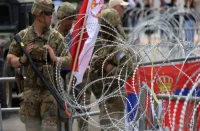
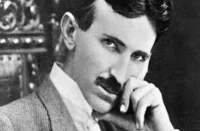
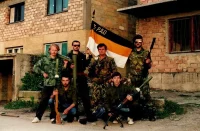





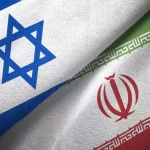





Comments